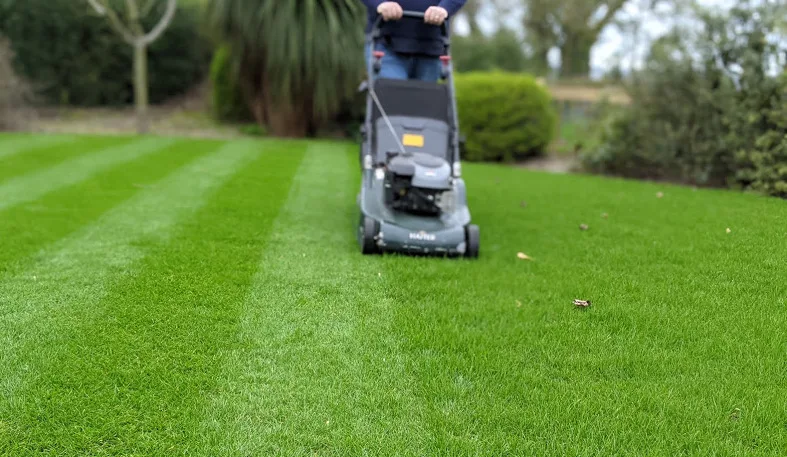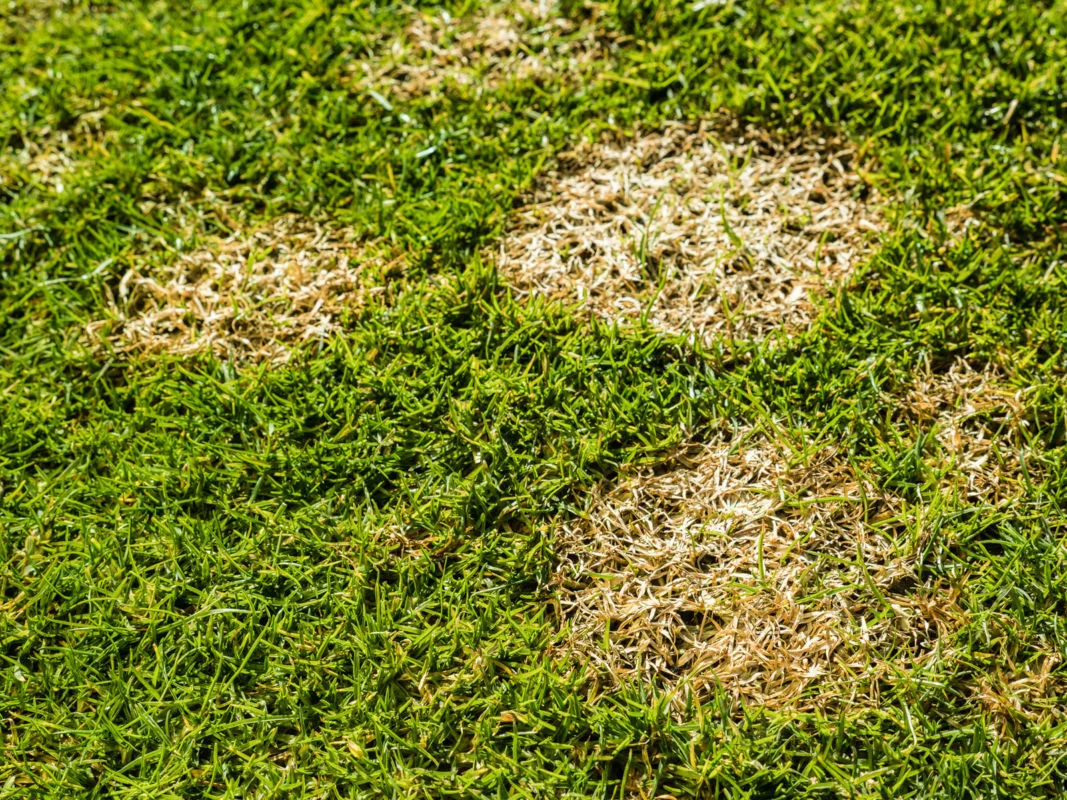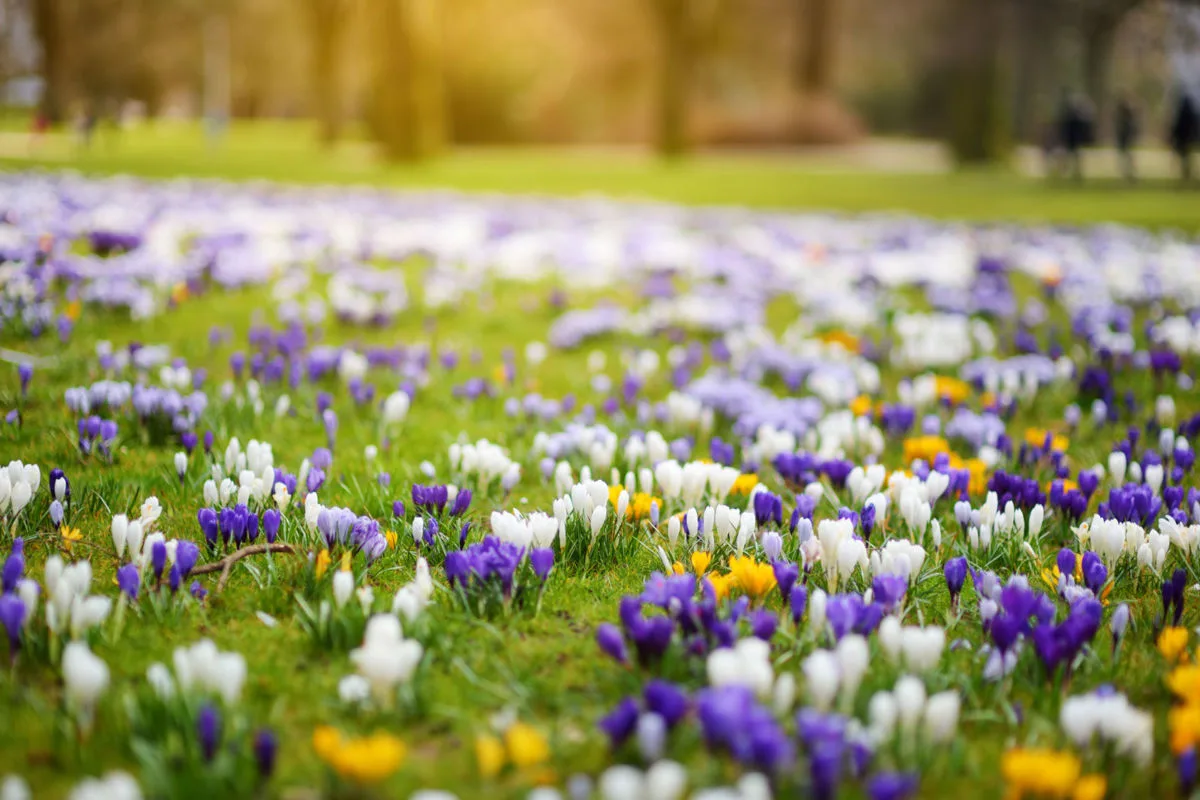Here are our tips for November lawn care. From mowing to leaf blowing, with a surprise section on naturalising spring bulbs.
November, more than any other month in the lawn care calendar, is about trusting your instincts. There’s no guarantee of what weather we’re going to get. It could be mild, or it could be cold. We may have lots of rain, or we may have frost. But if you understand the science behind lawn care, you’ll be able to make informed decisions about what your lawn needs.
- If the grass keeps growing, you can keep mowing
- Raise the cutting height of your mower so that the grass can harvest as much sunlight as possible
- Service your lawn mower and sharpen those blades.
- Keep the lawn clear of toys, furniture and fallen leaves
- This is NOT the time for harsh renovations. Put your scarifier in the shed
- Watch out out for common lawn diseases
- Apply autumn/winter lawn treatments such as feed and seaweed
- Avoid walking on the grass if it’s frozen or if the ground is sodden
- Plant bulbs for naturalising in your lawn
Mowing your lawn in November

I don’t know what the weather is going to be like in your garden, so I’m afraid I can’t advise you on how often to mow your lawn in November. What I can say, is that if the soil is still warm and the grass is still growing, it’s OK to mow your lawn if you think it needs it.
Because the daylight hours are shorter and the temperature cooler, your grass will be growing a lot slower than it does in spring time. What that means is that it will take longer for it to recover from “damage”. Mowing your lawn damages the blades of grass and potentially compresses the soil beneath the lawn. So your job as a lawn lover, is to minimise any damage.
Keep the mower blades clean and sharp. Really sharp. Blunt blades rip at the grass leaving a nasty ragged wound that takes ages to heal. Not only will it look ugly when the scars turn brown, you are creating a great opportunity for disease spores to enter the plant. Good hygiene is imperative at this time of year.
Keep an eye on the weather forecast. If there’s a frost predicted for your area, don’t mow your lawn. Wait for a mild day. You might get frustrated at not being able to mow, but trust me, you’ll be angry at yourself if you damage your lawn.
Mowing height for November
Why raise your cutting height? Well, grass needs sunshine to survive. That’s a fact. In November, the days are shorter and the sun is lower in the sky and therefore weaker. So there’s less sunshine around – even on nice days.
Grass plants use their leaves to harvest energy from the sun. The bigger the surface area of the leaf, the more energy they can absorb. And they need that energy to stay alive. If they can’t absorb enough sunlight, they won’t be able to process nutrients, keep their cells healthy, fight off disease and resist frost.
Mowing height of course depends on what type of lawn you have and which grasses are growing in it. For a family lawn with a fair proportion of ryegrass, 5-6cm is a good winter height. For a fescue lawn, you can get away with a shorter sward, but please don’t attempt to go beneath 1.5cm.
If we mow so low that the proportion of leaf to root is all wrong – the plants will struggle to sustain themselves and you’ll see discolouration and weak, sappy growth as they try to replace what’s missing. In short, your lawn will become weaker and less tolerant to environmental pressures.

Clear the lawn and let in the light
On the subject of daylight, and making sure your lawn gets enough of it, clearing the grass of debris is absolutely crucial.
That means, taking toys and furniture off the lawn as soon as you’ve finished using them. Dog poo is another sunlight stealer – I tend to have a quick check of the lawn at least once a day in case Bella has left me any messages.
Falling leaves are a pain at this time of the year. But if you invest in a good leaf blower, you’ll find that the clear up is much less onerous. Please don’t allow leaves to sit on your lawn for more than a couple of days. Come the spring you WILL see bare patches where they’ve been.
Now that shrubs, trees and hedges are largely dormant, you can trim them back. This will let light into the lawn all year round. Plus will help with air flow and ventilation…which are your two biggest friends in the fight against fungal lawn diseases.
Common lawn diseases
It’s not unusual for a mild November to stimulate an attack of Fusarium patch disease. It’s caused by a fungus which lives happily side by side with your grass for most of the year. However, when conditions are right (mild, damp weather), the fungus will want to replicate itself. All of the dormant spores that live in the thatch layer, come to life and grow into tiny fruiting bodies that want to produce more spores. It’s perfectly natural and all part of the lawn ecosystem.
Having said that, an overload of microscopic fungi feeding on your grass plants puts an awful strain on your lawn. You’ll know that it’s happening, because you’ll see globules of white slime on the leaves. Normally they manifest themselves in irregular shaped patches on the lawn and quite often the grass will take on a yucky brownish colour. At the risk of sounding crude – fusarium looks as though someone with a very bad cold has sneezed all over your lawn.

As with most lawn diseases, prevention is the best cure. Keep your lawn well nourished so that the plants can combat disease more easily. Make sure that your mower blades are scrupulously clean and disinfect them after every mowing session. Scarify once a year to remove the thatch layer where the fungal spores live – please don’t do it between October and March though.
If you see signs of fusarium on your lawn, move quickly. Treat it ASAP with Provanto Lawn Disease Control or a similar product.
If in doubt, or if the infection has really taken a hold, contact your local lawn care specialist – they have access to chemicals that are not available to the general public.
Feeding your lawn in November
Your lawn is growing slower – but it is still growing. At this time of year, it’s important that the plant has enough nutrients to help it build really strong – ie frost resistant cell walls. Plants also need as much help as possible to harvest and process what little sunshine there is. What they don’t need, is for the leaves to be growing too fast. Without that balance of warm soil and long daylight hours, the plant doesn’t have the energy to support fast growth.
For winter feed, I recommend a foliar feed that will strengthen the grass, and a seaweed treatment to help unlock soil nutrients and make them more available to the plants. You may want to choose a foliar feed with plenty of iron in it. This will help to green up your lawn and it will help to control moss at the same time.
Spring bulbs to naturalise in your lawn

One thing you could add to your November lawn care plans, is planting some spring flowering bulbs that can naturalise in your lawn.
Now flowers in the lawn is not everyone’s cup of tea. I get that. And feel free to skip this section if it’s not for you.
But from a garden design point of view. In early spring, before your trees and your perennial planting has really woken up, a nice splash of colour is incredibly welcome. Most of the year, your lawn is a foil for other garden features. In winter it can be, well – a bit boring.
The big disadvantage of growing spring bulbs in your lawn is that you can’t mow while they still have their foliage. The flowers look great, but once they have faded, you have a couple of months looking at long grass before you can tidy it up. That’s great if you have a huge, informal lawn or perhaps an orchard. But in a smaller, garden, you need to choose your bulb species wisely.
Snowdrops and/or crocus are perfect for naturalising in a lawn. Their leaves are quite fine and they tend to flop a little, so that they lie flat to the ground. Which means that you can still mow – albeit on a higher setting. Muscari – or grape hyacinth – is another good one for short grass.
For a bright splash of colour in an informal lawn – try “tete a tete” daffodils – they’re not too tall.
November lawn care help
If you are needing November lawn care advice, follow my YouTube channel for seasonal videos, and join our lawn care community on Facebook.
You might also find these articles helpful.
Your garden and lawn care calendar
Seasonal lawn care treatments for winter
